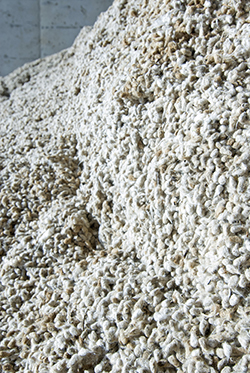 The price picture for cotton in the 2015-2016 marketing season is even more complicated than usual, but so far indications are that whole cottonseed will be more expensive for dairy producers this fall.
The price picture for cotton in the 2015-2016 marketing season is even more complicated than usual, but so far indications are that whole cottonseed will be more expensive for dairy producers this fall.The outlook has many interrelated parts, including below-cost prices for some growers, and uncertainties about crop size and quality.
Plentiful global cotton supplies have generally pushed market prices below the cost of production, says Tom Wedegaertner, director of cottonseed research and marketing at Cotton Incorporated. This has resulted in some growers not planting as many acres this year.
USDA's June 10 World Agricultural Supply and Demand Estimates report predicted a smaller U.S. cotton harvest in 2015 that translates into an 11 percent decline in whole cottonseed versus 2014. This was backed up by a June 30 USDA forecast for 500,000 fewer total cotton acres and 1.5 million less bales.
"Due to the smaller crop, prices are definitely going up and will be relatively strong this fall," predicts cottonseed merchandiser Larry Johnson of Cottonseed LLC in La Crosse, Wis.
Part of the crop decline is attributed to low farmer prices since last summer that curtailed some planting this year. Cotton prices have been in the low to mid-60 cents per pound for all of 2015, a six-year low and below cost for some growers. By comparison, prices were over $1.00 virtually all of 2011, peaking briefly above $2.20.
An unusually wet spring in the Gulf States this year – March through May rainfall in the Mid-South region was 150 percent of average, says H. Scott Stiles, University of Arkansas extension economist – delayed planting and/or eliminated some acreage there. He predicts a 31 percent drop in cotton acres in the five-state area compared to last year.
"Most of the decline is market related and about 10 percent is weather related," he adds.
Texas, which produces about half of all cotton in the U.S., did not escape those rains, although its densest growing region around Lubbock, in the Panhandle, did.
A National Cotton Council survey of grower planting intentions found a 14.6 percent year-over-year reduction in U.S. planted cotton acreage, and a recent USDA Prospective Plantings reported a 13 percent decline projection.
There is at least one big argument against a higher price forecast, however.
Cotton analysts are unanimous that there is a buildup of global cotton stocks, due in no small part to changing policies in China, the world's largest cotton importer. China is now emphasizing greater use of domestically grown cotton, which forecasters think may translate into a 25 percent decline in Chinese cotton imports versus 2014-2015, and a 70 percent decline from its heavy purchase period of 2011 to 2014.
Once again, uncertainty abounds as to which way the cotton market and prices will ultimately play out in 2015.

The author has served large Western dairy readers for the past 38 years and manages Hoard's WEST, a publication written specifically for Western herds. He is a graduate of Cal Poly-San Luis Obispo, majored in journalism and is known as a Western dairying specialist.







